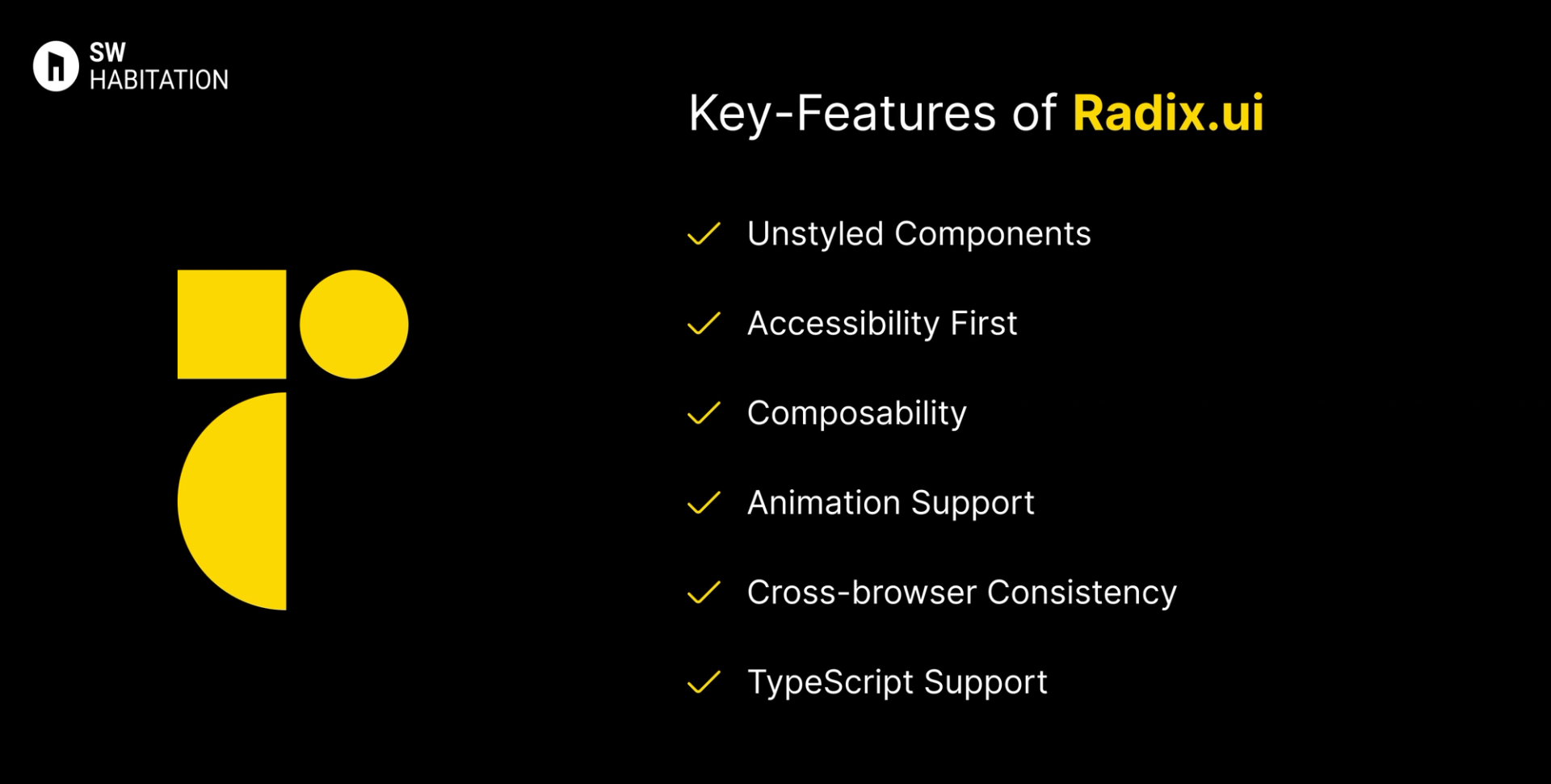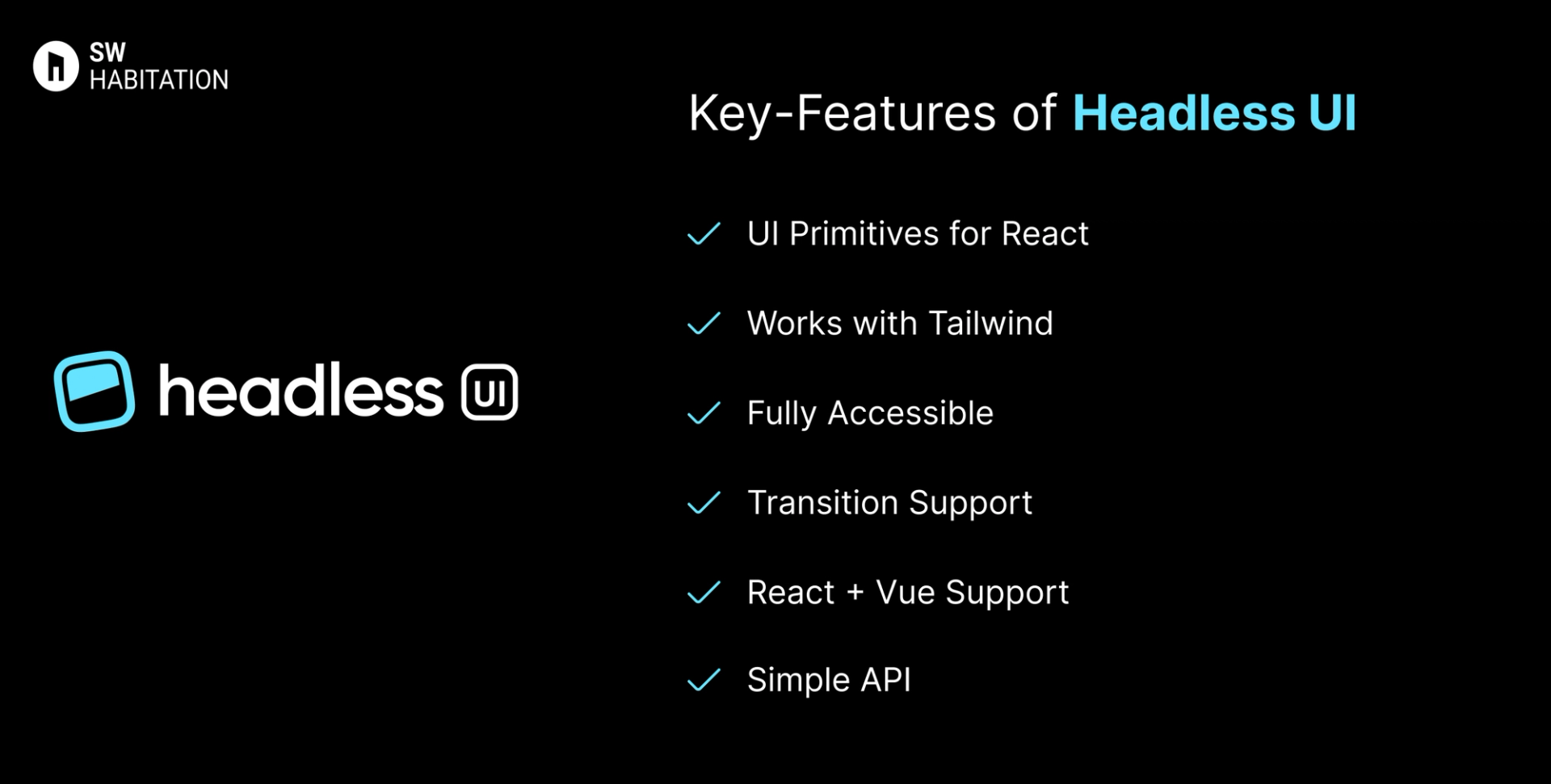Radix UI vs. Headless UI

Radix UI

Headless UI
You know how building a website can feel like a lot, especially when you’re trying to style every little thing yourself? Buttons, forms, layouts… it adds up fast. That’s where UI frameworks really save the day. They give you a bunch of premade design elements that you can just drop in and go. It’s like having a design starter pack that helps your site look clean and professional, without spending forever tweaking the details.
What is Radix UI?
Radix UI is a modern component library offering headless, unstyled, and accessible primitives for React. These primitives include tooltips, dialogs, dropdowns, switches, and more, giving you full control over their design and behavior.
It's built for developers who want to create custom design systems without reinventing the wheel.
Key Features of Radix UI


- Unstyled Components: You bring your own styles using any CSS method.
- Accessibility First: Meets WCAG standards and handles focus management, keyboard support, ARIA, etc.
- Composability: Designed to work well in any React component structure.
- Animation Support: Works well with animation libraries like Framer Motion.
- Cross-browser Consistency: Tested across all major browsers.
- TypeScript Support: Full typings for all components.
Advantages of Radix UI
- Total design freedom, you're not tied to any design system.
- Accessibility is handled for you out-of-the-box.
- Works with Tailwind, Emotion, Styled Components, or vanilla CSS.
- Ideal for teams building a component library or design system.
- Tree-shakable, import only what you need.
Disadvantages of Radix UI
- No styles included, you must build your own from scratch.
- Longer time to build complete UIs compared to styled libraries.
- Slightly higher learning curve for accessibility and composition.
- Not ideal for beginners who want fast results.
What is Headless UI?
Headless UI is an unstyled component library built by the creators of Tailwind CSS. It provides completely unstyled, accessible components for React and Vue.
It’s a perfect fit if you use Tailwind CSS and want flexible UI primitives without being locked into a pre-designed style.
Key Features of Headless UI


- UI Primitives for React: Includes Dialog, Menu, Listbox, Disclosure, Combobox, Tabs, etc.
- Works with Tailwind: Designed to be styled easily with Tailwind CSS.
- Fully Accessible: Handles keyboard interactions, focus states, ARIA roles.
- Transition Support: Built-in transitions using the <Transition> component.
- React + Vue Support: Available for both major frameworks.
- Simple API: Easy-to-use component structure for common UI patterns.
Advantages of Headless UI
- Easy to integrate with Tailwind CSS.
- Extremely lightweight and focused API.
- Comes with transition utilities for easy animations.
- Provides both React and Vue versions.
- Ideal for Tailwind-first projects needing flexibility.
Disadvantages of Headless UI
- Limited component set fewer primitives than others.
- Strongly tied to Tailwind ecosystem in examples and community.
- Transition component only supports basic animations not Framer Motion.
- Not suitable if you want full control outside Tailwind workflow.
- No TypeScript-first approach less complete typings than others.
Comparison Between Radix UI vs Headless UI
Use Cases of Radix UI
- Custom design systems and UI kits
- Accessibility-first enterprise apps
- Complex UIs needing fine control (e.g., advanced modals, tooltips)
- Developers who prefer full styling freedom
- Applications requiring granular component logic and behavior
Use Cases of Headless UI
- Projects using Tailwind CSS (especially with React/Vue)
- Lightweight React or Vue apps needing basic headless components
- MVPs or quick prototypes with Tailwind
- Simpler UIs where you don’t need deep customization
- Beginners or solo developers familiar with Tailwind CSS
Other Resources
Conclusion
UI frameworks make building a polished website way easier. Whether you're working on something simple or a big project, they help you get things looking just right without having to stress over every little design decision. With ready-to-use components, responsive layouts, and modern styles, you can build faster and smarter.
So, pick one that works for you, and start creating a site that looks amazing from the get-go.
Frequently asked questions
Is Radix UI a UI library or just logic?
It's a headless UI library that provides unstyled, accessible primitives like Dialog, Tooltip, Tabs, etc.
Is Radix UI styled?
No. It leaves styling completely up to you — use Tailwind, CSS modules, or styled-components.
Does Radix UI support dark mode?
Yes, but it depends on your implementation — it doesn’t manage themes out-of-the-box.
Is Radix UI accessible?
100%. It strictly follows WCAG and ARIA best practices.
Is Radix UI React-only?
Yes. It only works with React (and supports TypeScript out-of-the-box).
What is Headless UI used for?
It provides unstyled, accessible components like dialogs, lists, and menus — perfect for Tailwind-based UIs.
Does Headless UI support Vue?
Yes, it supports both React and Vue.
Is Headless UI styled by default?
No. It gives full control over design; you provide all styling (often with Tailwind CSS).
Does Headless UI handle accessibility?
Yes, it handles keyboard nav, focus traps, ARIA roles, and screen reader compatibility.
Can I animate Headless UI components?
Yes, using the built-in <Transition> component — though it's basic compared to animation libraries.
